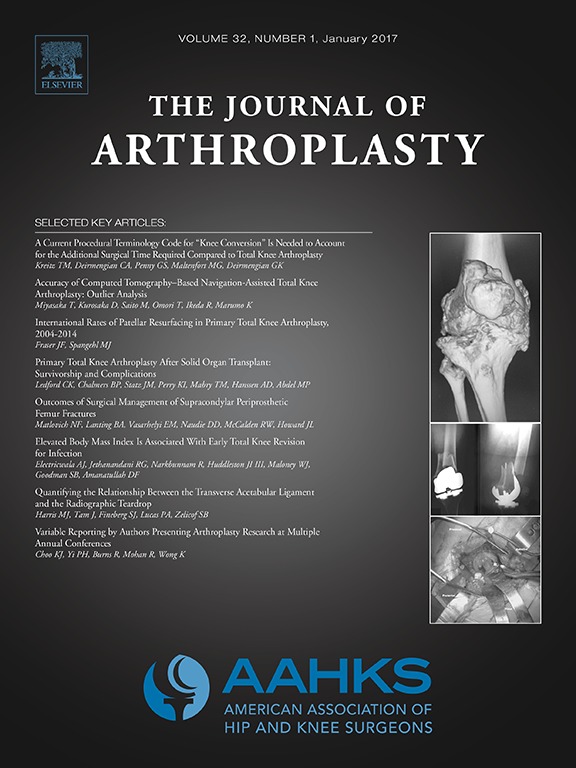
Arthroplasty
Increase in component outliers with quadriceps-sparing versus medial parapatellar TKA
J Arthroplasty. 2018 Jan;33(1):277-283Eight randomized controlled trials were included in this meta-analysis comparing a range of outcomes between the quadriceps-sparing (QS) approach and the medial parapatellar (MPP) approach in total knee arthroplasty. For surgical outcomes, QS groups demonstrated significantly longer operative time by approximately 20 minutes, with no significant differences on measures of blood loss. For clinical outcomes, a statistically significant difference in favour of QS groups was observed in Knee Society Function scores, though differences fell short of clinical importance (MCID 6 pts); otherwise, no significant differences in pain, clinical scores, or range of motion were observed between QS and MPP groups. For radiographic outcomes, the rates of femoral component, tibial component, and mechanical axis outliers were significantly greater among QS groups compared to MPP groups.
Unlock the full article
Get unlimited access to OrthoEvidence with a free trial
Start TrialCritical appraisals of the latest, high-impact randomized controlled trials and systematic reviews in orthopaedics
Access to OrthoEvidence podcast content, including collaborations with the Journal of Bone and Joint Surgery, interviews with internationally recognized surgeons, and roundtable discussions on orthopaedic news and topics
Subscription to The Pulse, a twice-weekly evidence-based newsletter designed to help you make better clinical decisions
Exclusive access to original content articles, including in-house systematic reviews, and articles on health research methods and hot orthopaedic topics
Or continue reading this full article
Register Now

Subscribe to "The Pulse"
Evidence-Based Orthopaedics direct to your inbox.




































